The picturesque thatched cottages of Dorset villages are are beloved of grockles or tourists from around the world. Often sought after as the ideal country retreat thatched roofs were common place in towns as well. In 1721 a massive fire swept through the market town of Sturminster. The White Hart built in 1708 was lucky to survive, (indeed it survived another major fire the other side in recent years) it continues to thrive and has recently been re thatched.
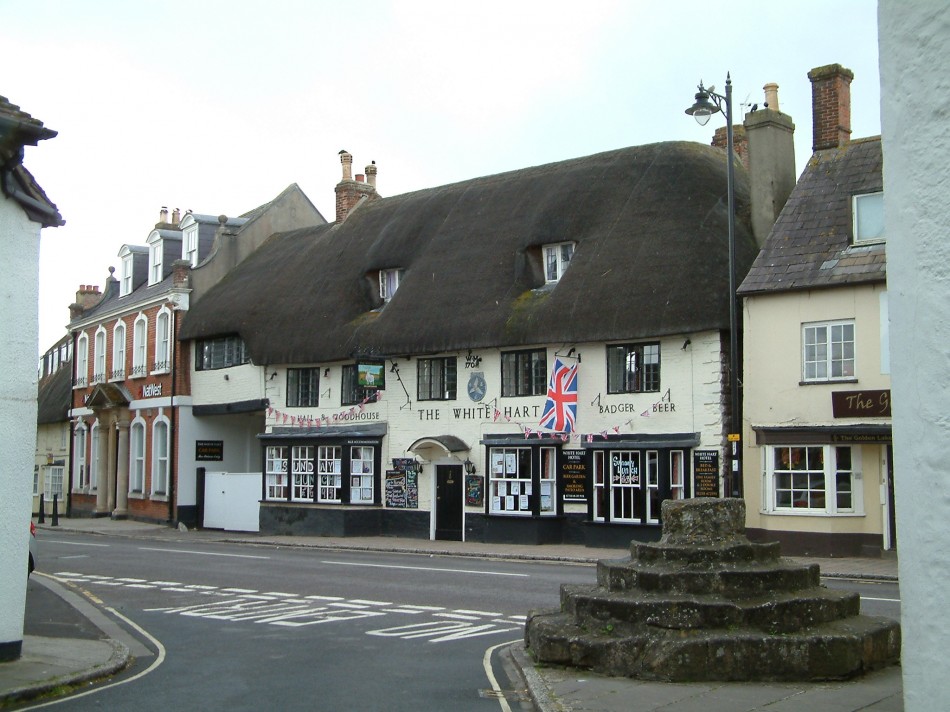
Still a genuine working pub for locals and welcoming to visitors from all over. The Hart has been witness to punishment whippings on the cross and the spontaneous mountain of flowers upon the death of Princess Diana over the centuries. Seen here at the start of its second Royal Diamond Jubilee weekend.
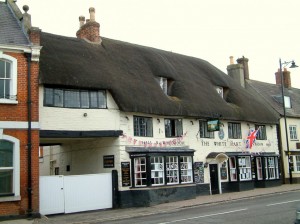

Across the road is the former town hall of Sturminster, now an excellent free museum, well worth a visit. A mix of local stone, timber frame with cob infill.
Still a working rural town with thatched cottages as farm workers homes as evidenced by the tractor in the drive, despite the loss of its calf market once the largest in Europe. Sturminster is now back at the heart of the Blackmore Vale with its new cultural Exchange building on the site of the old market. Community values being very strong here.
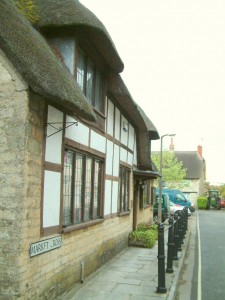

The kind of devastating fire that destroyed much of Sturminster to the north of the brick built cottages in the above picture was common across the country from the well known Great Fire of London, to fires that dramatically changed townscapes across Dorset including Wareham and Blandford where the Bastard brothers famously remodelled the town centre in Georgian times. Thatched premises eventually were not rebuilt in more built up areas after fires as they had been before, once clay tiles, and slates became commonly affordable. In amongst the cottages found in villages the modern materials of slate and tile were also used as alternative due as much to fashion and durability. Many gaps exist in village streets of thatch not due to fire but simply the cheaper cob built dwellings have rotted and gone.

A rural row of cottages mainly cob in construction with brick repairs and additions. Often the cob cottages were of the poorest construction, the durable heart woods of Oak and Elm timbers have survived mainly with probably all the Ash and other cheap less durable timbers long since gone.
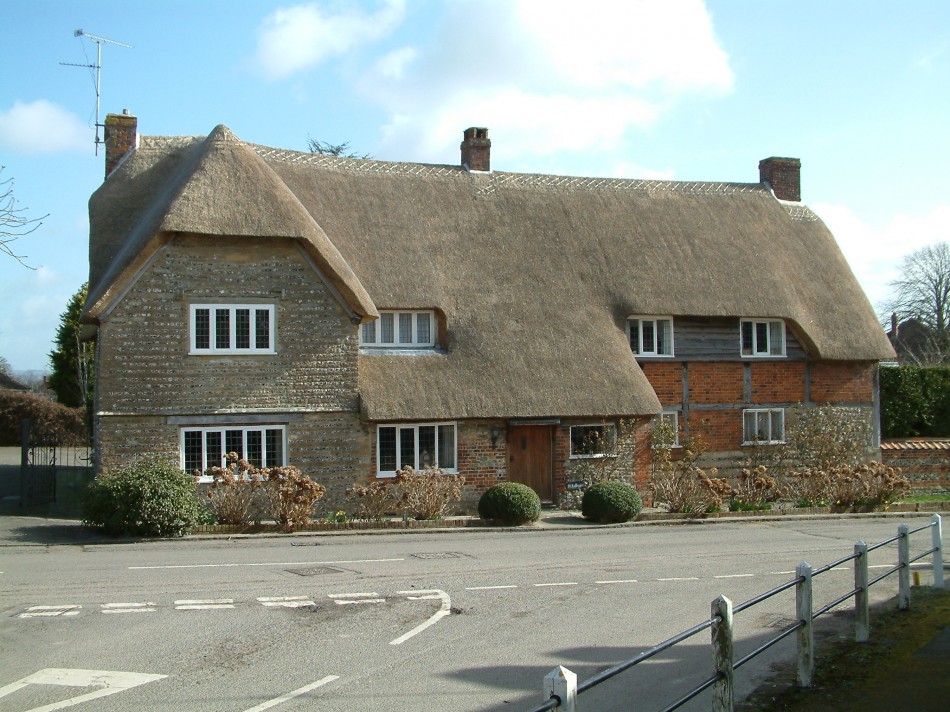
A large Oak framed village centre thatched cottage, with brick and flint construction over several generations, probably several cottages now linked together.

In the foreground a painted brick cottage showing later construction by way of the regular build style over all, same size windows and brick use throughout. Behind is an older property with stone and flint construction, an irregular pattern with render protecting the more exposed face, and an end which is of looser construction.
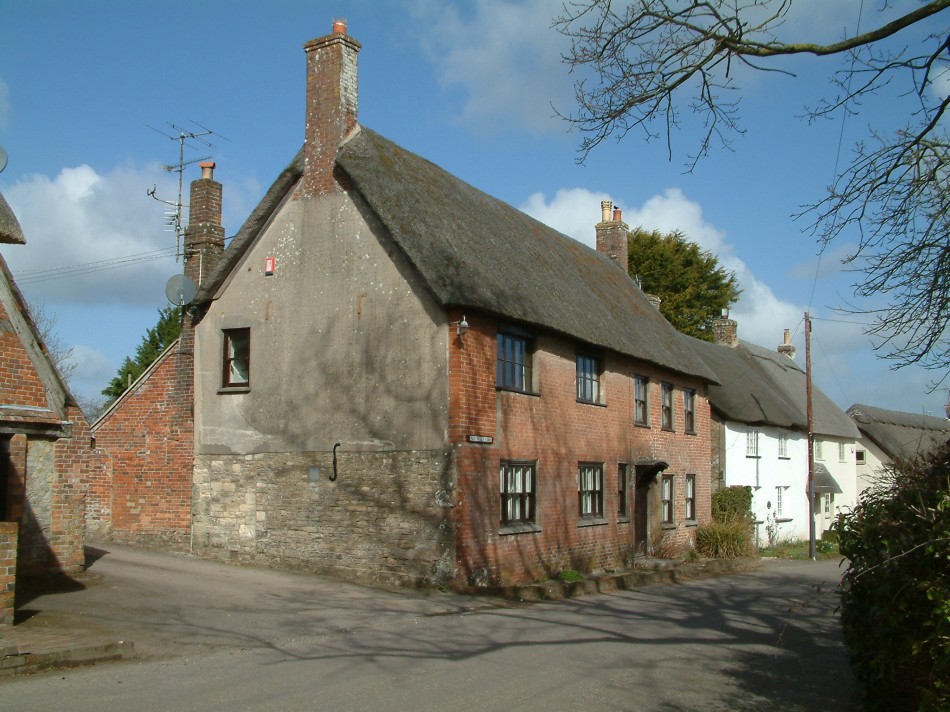
Again a miss match of vernacular styles in a street, this brick built farm house in the heart of village itself shows miss matched windows, perhaps again the result of subdivision. The stone and part rendered end wall shows wrought iron tie straps. The best face showing off the more expensive local hand made brick. And the later ‘lean to’ back extension constructed when brick and clay tiles were cheaper options than thatch.

Part of a large brick farmhouse with Flemish bond courses, uniform windows and construction. However there is a brick and tile extension on either end in the same local brick, and the blocked doorway in stretcher bond shows when a pair of cottages were joined together into one dwelling.
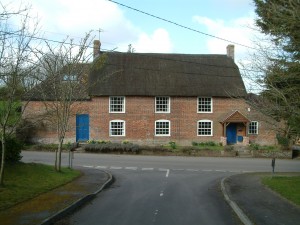 The same cottage seen from further back with the alterations blending in perfectly.
The same cottage seen from further back with the alterations blending in perfectly.
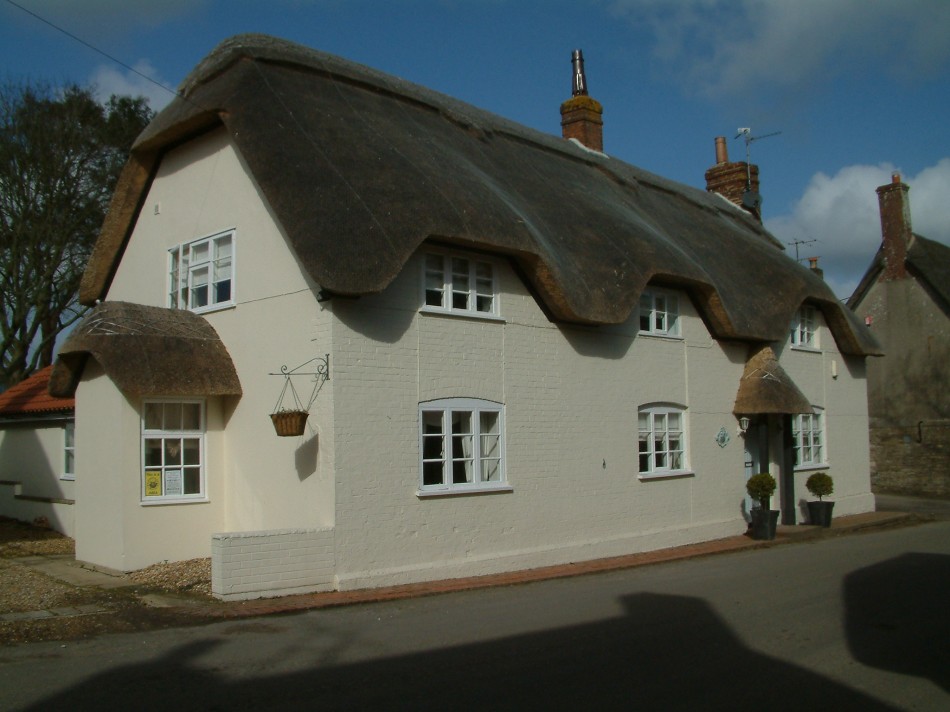
Painted brick cottages.
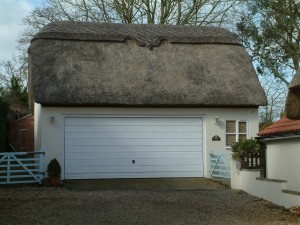 And round the side a thatched double garage blending in perfectly with the other structures along the street.
And round the side a thatched double garage blending in perfectly with the other structures along the street.

The rural dream of many, a Dorset cottage with climbing Roses.

Another mixed brick, stone and flint thatched house on the edge of a village. But this one is deceptive and perhaps the acceptable face of HRH Prince Charles’ Poundbury legacy which has inspired a more fitting county plan where new homes blend in harmoniously with existing building.
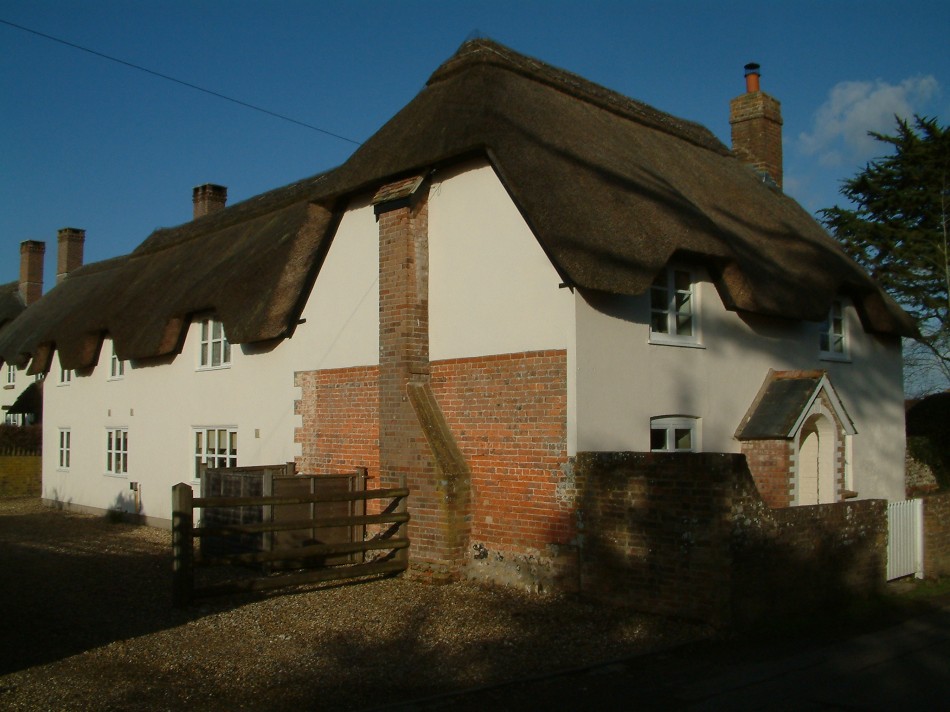
As an example of a new development blending in above is an old roadside cottage with exposed brickwork, a high wall leading to a farm yard which has modern thatched cottages adjoining in a small development which people pass without batting an eye. Only the standardised chimney tops reveal a modern pattern.
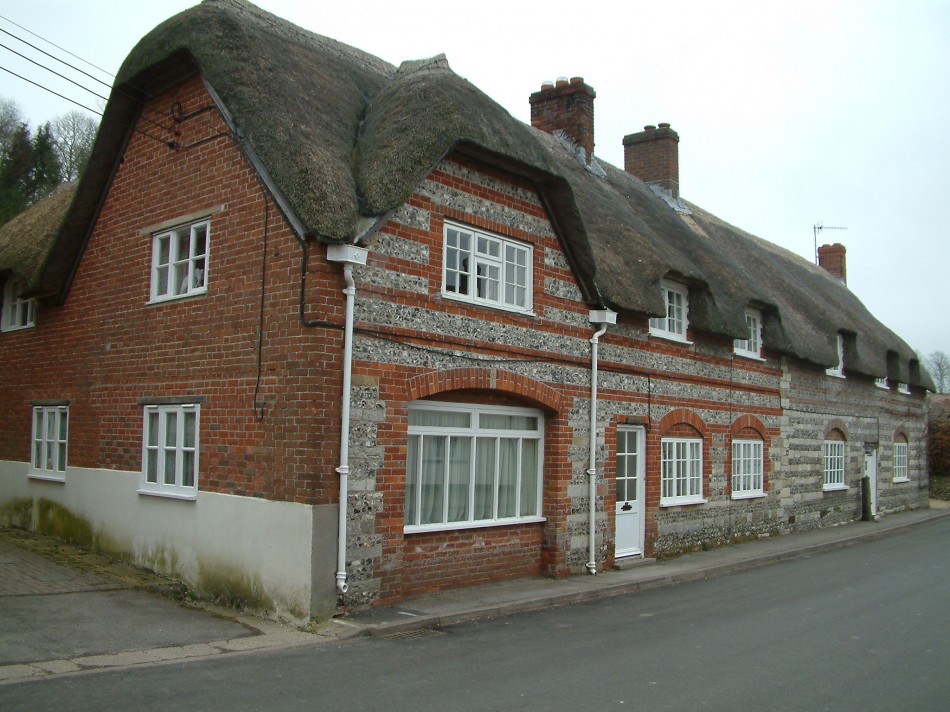
Brick, stone and flint used in a valley that in the mid 1970′s had a number of run down properties looking for new owners. Today homes here as in much of Dorset are highly sought after.

In the same valley another old cottage blending in to the surroundings and peoples perception of a traditional Dorset cottage. But like other homes this in reality is a relatively new building, meeting modern regulations but pleasing to eye and selling superb eggs!
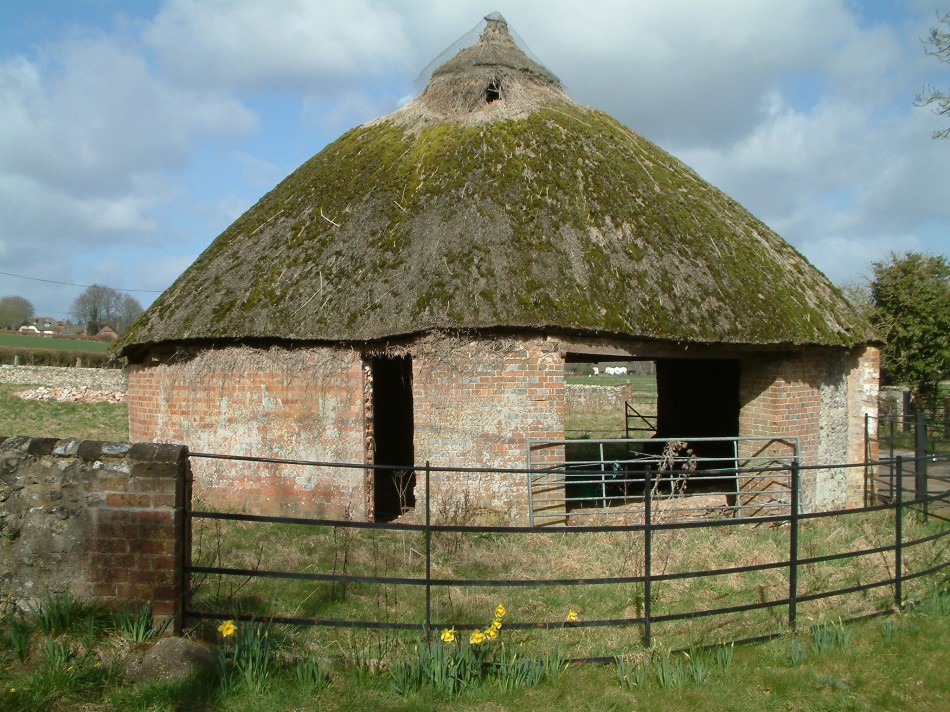 Agricultural buildings were also thatched, and to the same high standards as they had to protect the livelihood of villagers. But now few survive, expensive to upkeep as new materials and farming methods were introduced, above is a very rare pound. One near the Dorset border was beautifully restored by a master thatcher who stored his materials in it, and gave it a new lease of life. Unfortunately vandals came over the border from Yeovil and senselessly burned it down destroying an important part of the country’s heritage.
Agricultural buildings were also thatched, and to the same high standards as they had to protect the livelihood of villagers. But now few survive, expensive to upkeep as new materials and farming methods were introduced, above is a very rare pound. One near the Dorset border was beautifully restored by a master thatcher who stored his materials in it, and gave it a new lease of life. Unfortunately vandals came over the border from Yeovil and senselessly burned it down destroying an important part of the country’s heritage.

Whilst few thatched agricultural buildings have survived, those that have are well built, and well loved. Often part of manor farms which are more likely to be private dwellings now than bustling working farms with large machinery and few labourers. The thatched hay stacks once seen in fields across the country are truly objects of days gone by, replaced by giant plastic wrapped bales.
 Perhaps as farming methods changed with automation, and firms like www.Burtsteelfabrications.co.uk put up bigger and bigger barns across Dorset many more old thatched examples could have been destroyed. However farmers anywhere hate to throw things away, and to destroy an old barn to build a new one where space permits is more cost. Small businesses and craft units moved into redundant barns and the steel erectors replaced the thatchers by applying wriggly tin to many ancient structures. The roof shape often revealing the history.
Perhaps as farming methods changed with automation, and firms like www.Burtsteelfabrications.co.uk put up bigger and bigger barns across Dorset many more old thatched examples could have been destroyed. However farmers anywhere hate to throw things away, and to destroy an old barn to build a new one where space permits is more cost. Small businesses and craft units moved into redundant barns and the steel erectors replaced the thatchers by applying wriggly tin to many ancient structures. The roof shape often revealing the history.

In that unseen turn of fate, new barn type buildings are even constructed with the steel erectors fitting modern insulated secure roofs. Small successful businesses thrive across Dorset in rural locations tucked away saving many farms from housing development.
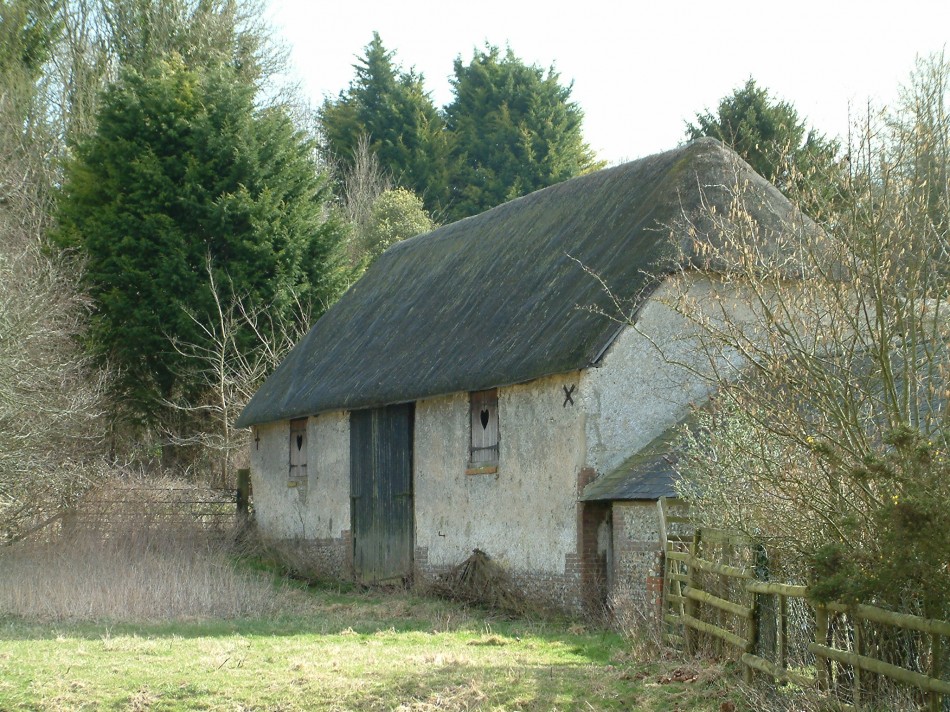
A rare Dorset thatched agricultural building still in use, note the brick foundations and protective corners for the rubble stone walls.
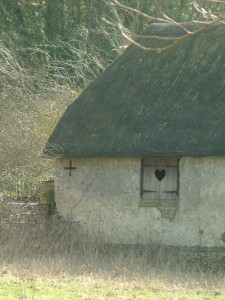

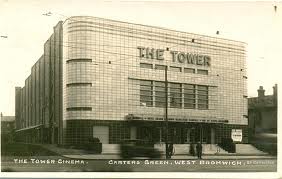
 Madeleine Carroll. West Bromwich born film star, one the first glamorous Hitchcock blondes, she outlived the then new Tower Cinema. The Compton Organ which once rose out of the floor survives at Fentham Hall, in Hampton in Arden, Solihull. Hopefully this post in the blog shall be revisited,and other examples will be included such as cinemas and stores. I cannot pretend all the pictures are going to be the best as many lovely properties have sadly but understandably lost original fittings, and gained hoardings, satellite dishes etc. Change of use is inevitable, and now many of these buildings have gained more admirers, recognition and legal protection. I have resisted the temptation to sepia tone pictures and try to make them more ‘dated’. They are what they are now, old black and white postcards with vintage cars were of their day, ugly cars and vans of today will also be nostalgic vintage in time, the buildings are largely as they were seen in their day still looking great. Please feel free to contact us at intrinseca and tell us of interesting Art Deco sights, we have more but are always interested to hear of others.
Madeleine Carroll. West Bromwich born film star, one the first glamorous Hitchcock blondes, she outlived the then new Tower Cinema. The Compton Organ which once rose out of the floor survives at Fentham Hall, in Hampton in Arden, Solihull. Hopefully this post in the blog shall be revisited,and other examples will be included such as cinemas and stores. I cannot pretend all the pictures are going to be the best as many lovely properties have sadly but understandably lost original fittings, and gained hoardings, satellite dishes etc. Change of use is inevitable, and now many of these buildings have gained more admirers, recognition and legal protection. I have resisted the temptation to sepia tone pictures and try to make them more ‘dated’. They are what they are now, old black and white postcards with vintage cars were of their day, ugly cars and vans of today will also be nostalgic vintage in time, the buildings are largely as they were seen in their day still looking great. Please feel free to contact us at intrinseca and tell us of interesting Art Deco sights, we have more but are always interested to hear of others. 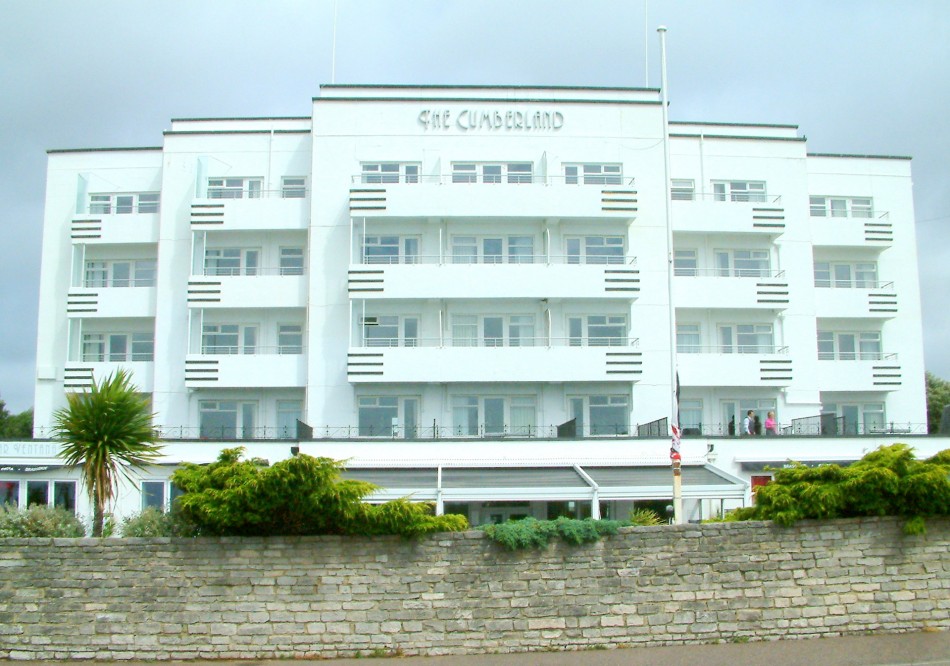 The famous Cumberland perched on the Bournemouth East Cliff, is still the best Hotel in the town. Truly stunning views out over the sea from the balcony rooms, quiet and within walking of the centre of the town. Afternoon tea, a pool on the sun deck and an excellent bar are notable features, also there are a lot on imaginative functions put on here by the friendly staff through the year.
The famous Cumberland perched on the Bournemouth East Cliff, is still the best Hotel in the town. Truly stunning views out over the sea from the balcony rooms, quiet and within walking of the centre of the town. Afternoon tea, a pool on the sun deck and an excellent bar are notable features, also there are a lot on imaginative functions put on here by the friendly staff through the year. 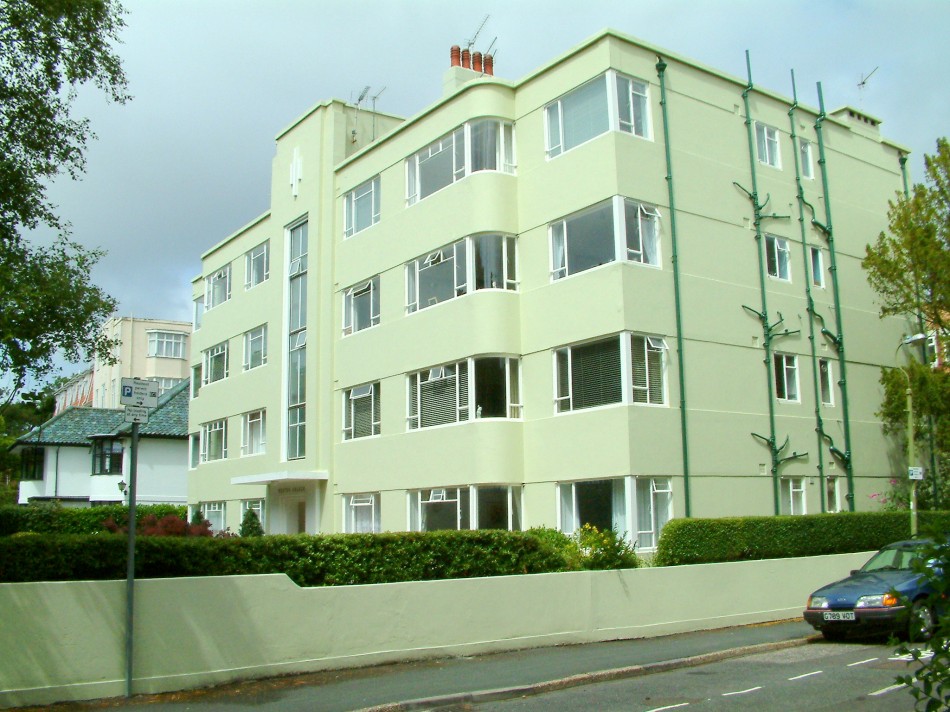 A block of flats or apartments with original windows, in a leafy road behind Bournemouth’s East Cliff.
A block of flats or apartments with original windows, in a leafy road behind Bournemouth’s East Cliff. 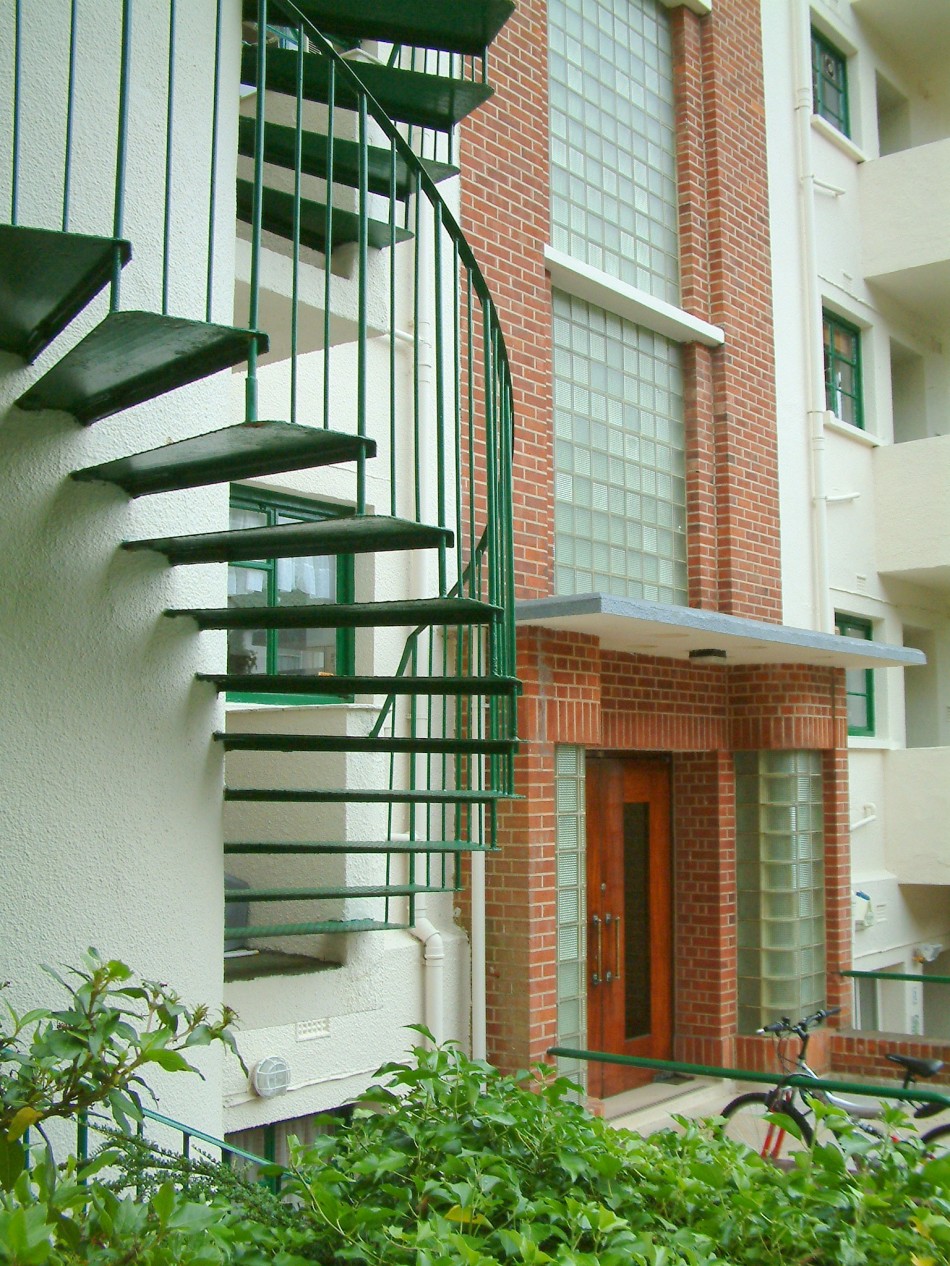 The rear of another block of flats, perhaps better termed apartments overlooking the Sea and beaches below the cliff.
The rear of another block of flats, perhaps better termed apartments overlooking the Sea and beaches below the cliff. 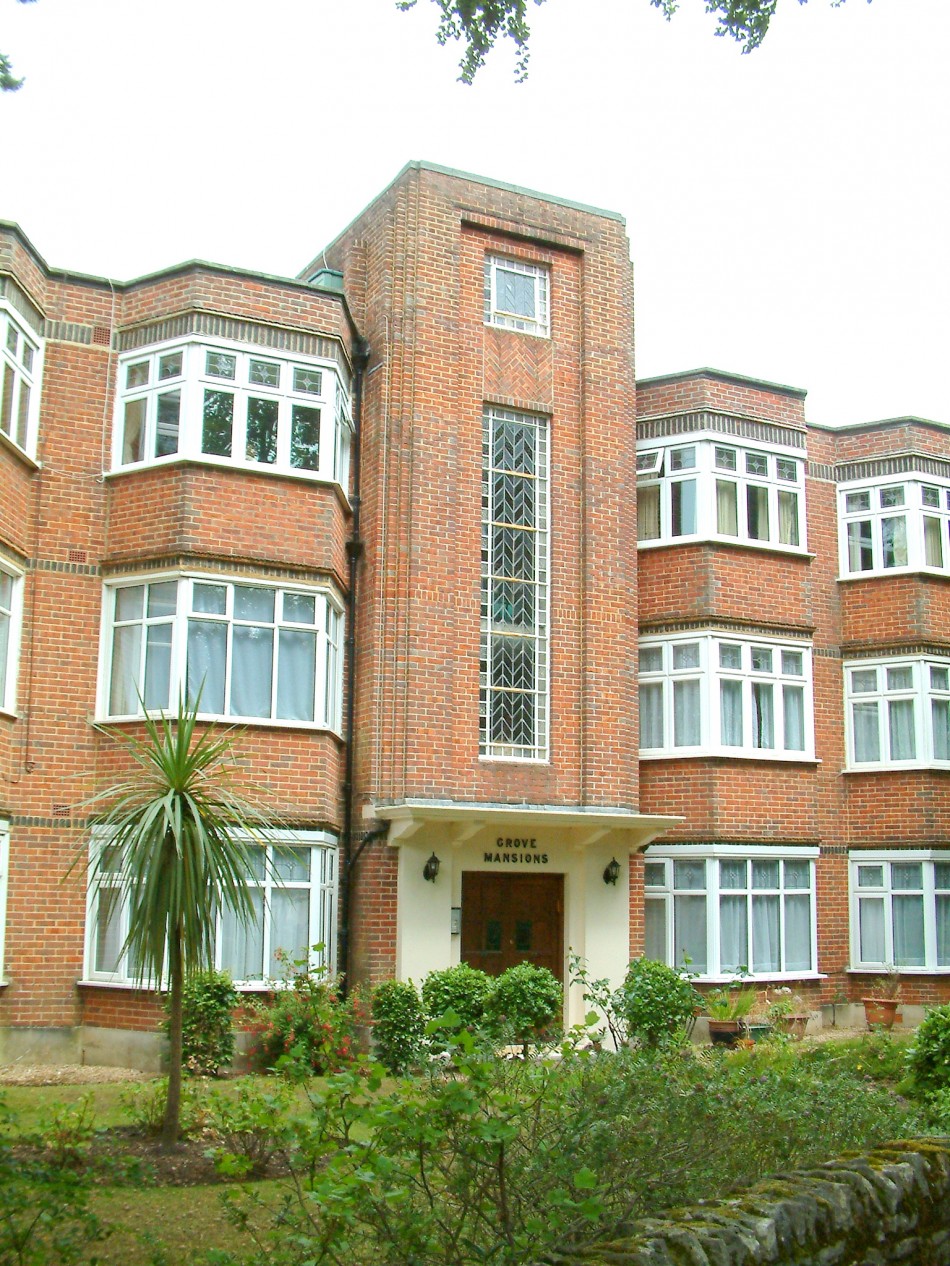 Grove Mansions on East Cliff, tucked further back from the sea, the new windows of the apartments are fairly harmonious and the central stairwell glazing is intact preserving the overall 1930′s appearance.
Grove Mansions on East Cliff, tucked further back from the sea, the new windows of the apartments are fairly harmonious and the central stairwell glazing is intact preserving the overall 1930′s appearance. 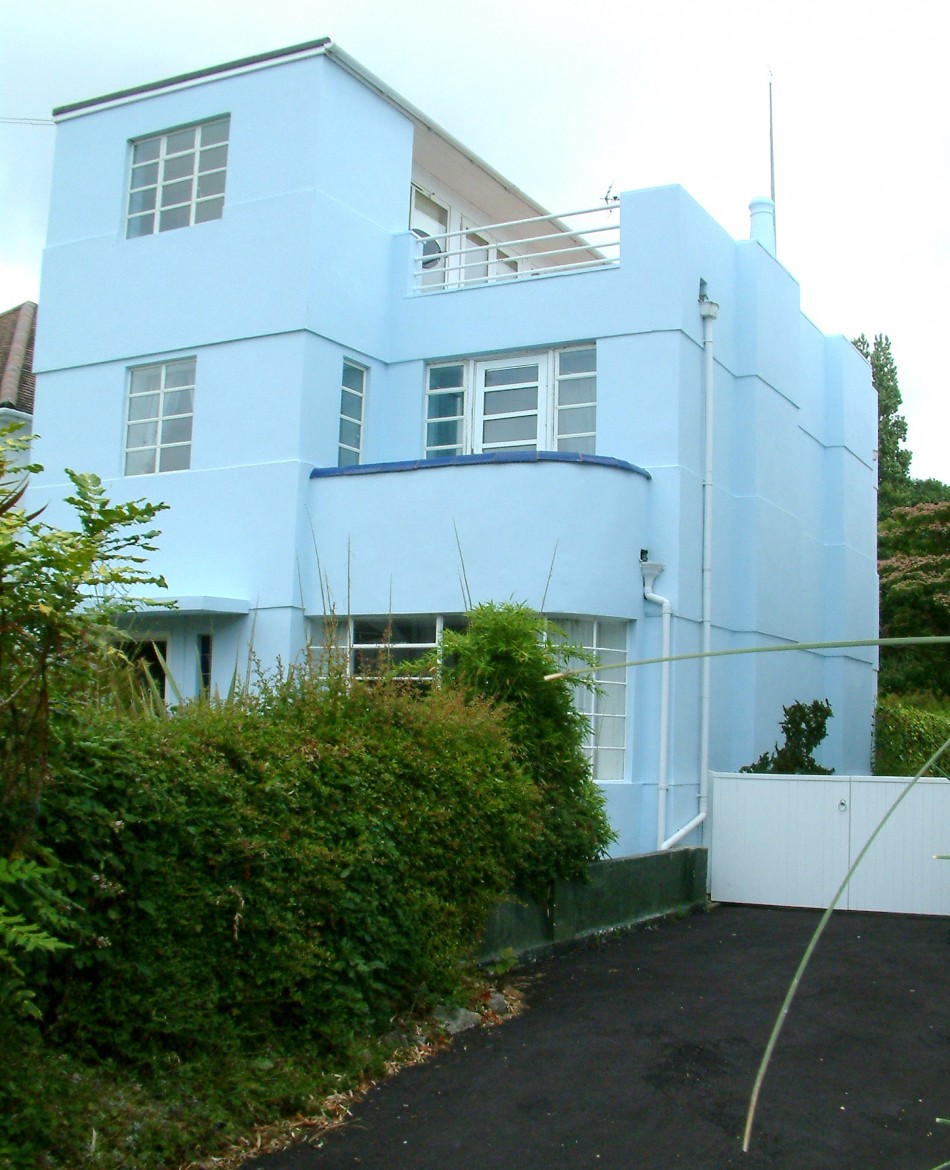 Over the border almost in Poole a private house I was lucky enough to view inside. Much of the interior had gone with so called modernisation but the owners had sourced period fittings, and commissioned craftsmen to put the house back to much of it’s original condition.
Over the border almost in Poole a private house I was lucky enough to view inside. Much of the interior had gone with so called modernisation but the owners had sourced period fittings, and commissioned craftsmen to put the house back to much of it’s original condition.  Another view of the above house, one of several in the area of Sandbanks.
Another view of the above house, one of several in the area of Sandbanks.  Close to Boscombe pier is the Iona building, with a bar, apartments and holiday flats.
Close to Boscombe pier is the Iona building, with a bar, apartments and holiday flats. 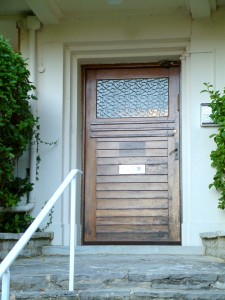 The original door to another apartment block on the sea front at Bournemouth. Sadly now the symmetry of this building is not what it was with new windows and sun rooms fitted to the balconies. I shall return later to get a better picture when my mate has taken his scaffolding down!
The original door to another apartment block on the sea front at Bournemouth. Sadly now the symmetry of this building is not what it was with new windows and sun rooms fitted to the balconies. I shall return later to get a better picture when my mate has taken his scaffolding down!  For comparison I have included this picture of a very important building in Dorset on the cliffs above Studland beach. Built by Canadian Army Engineers in 1943 and named after their Ontario base Fort Henry had a very short intended lifespan. Treacle the Border Terrier has just climbed through a very Deco styled vision slit. Built in great speed, and entirely functional perhaps the builders were influenced by other constructions they had made in peacetime. As a child in Hampshire I played in a large air raid shelter with distinct Deco detailing, and the name Plaza cast above the door. Through this vision slit King George VI, Prime Minister Winston Churchill, Supreme Commander Eisenhower, General Montgomery and other senior officers gathered to watch and safely endure the largest live ammunition exercise ever held in the UK, including an area carpet bombing as preparation for the invasion back into Europe.
For comparison I have included this picture of a very important building in Dorset on the cliffs above Studland beach. Built by Canadian Army Engineers in 1943 and named after their Ontario base Fort Henry had a very short intended lifespan. Treacle the Border Terrier has just climbed through a very Deco styled vision slit. Built in great speed, and entirely functional perhaps the builders were influenced by other constructions they had made in peacetime. As a child in Hampshire I played in a large air raid shelter with distinct Deco detailing, and the name Plaza cast above the door. Through this vision slit King George VI, Prime Minister Winston Churchill, Supreme Commander Eisenhower, General Montgomery and other senior officers gathered to watch and safely endure the largest live ammunition exercise ever held in the UK, including an area carpet bombing as preparation for the invasion back into Europe. 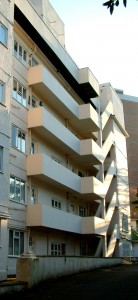 Again functional, the rear steps to an apartment block in Bournemouth are still an Art Deco styled feature in concrete, the lines would have been enhanced in their day with the modern narrow glazed steel framed windows as retained on the house seen below.
Again functional, the rear steps to an apartment block in Bournemouth are still an Art Deco styled feature in concrete, the lines would have been enhanced in their day with the modern narrow glazed steel framed windows as retained on the house seen below. 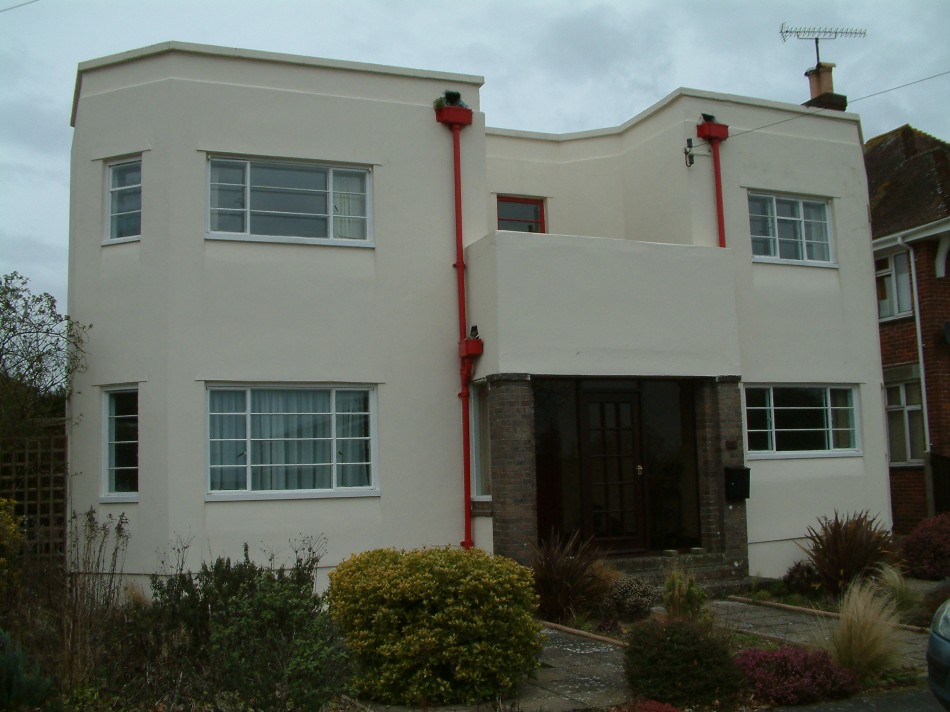 In Dorchester the county town, not a great deal of Art Deco styled building can be found amongst the largely Georgian and Victorian town centre. There is a Cinema still in use, but if you head to the outskirts, a lovingly maintained example can be found. As the suburbs developed along with greater use of the motor car in many British towns, amongst the nostalgic half timbered detached villas of the 1920′s and 30′s developers often took a chance with a striking modern building.
In Dorchester the county town, not a great deal of Art Deco styled building can be found amongst the largely Georgian and Victorian town centre. There is a Cinema still in use, but if you head to the outskirts, a lovingly maintained example can be found. As the suburbs developed along with greater use of the motor car in many British towns, amongst the nostalgic half timbered detached villas of the 1920′s and 30′s developers often took a chance with a striking modern building.  The lovely people in this house have retained the original features such as the Deco styled hoppers on the guttering. The windows have also survived the ravages of the “improvement” rage.
The lovely people in this house have retained the original features such as the Deco styled hoppers on the guttering. The windows have also survived the ravages of the “improvement” rage.  Another common feature seen on the modern styled houses of the 1930′s was the Sun deck or balcony. Getting away from the grime of many town centres sun bathing was in vogue. Here on the edge of town with clear views of the countryside a modern couple could enjoy increased leisure time in a quiet leafy road.
Another common feature seen on the modern styled houses of the 1930′s was the Sun deck or balcony. Getting away from the grime of many town centres sun bathing was in vogue. Here on the edge of town with clear views of the countryside a modern couple could enjoy increased leisure time in a quiet leafy road.  A simple boundary wall on one of the Bournemouth East Cliff Hotels, showing the geometric patterns and proportion that could have been otherwise simple and boring. Here the styling catches the light and casts shadows.
A simple boundary wall on one of the Bournemouth East Cliff Hotels, showing the geometric patterns and proportion that could have been otherwise simple and boring. Here the styling catches the light and casts shadows. 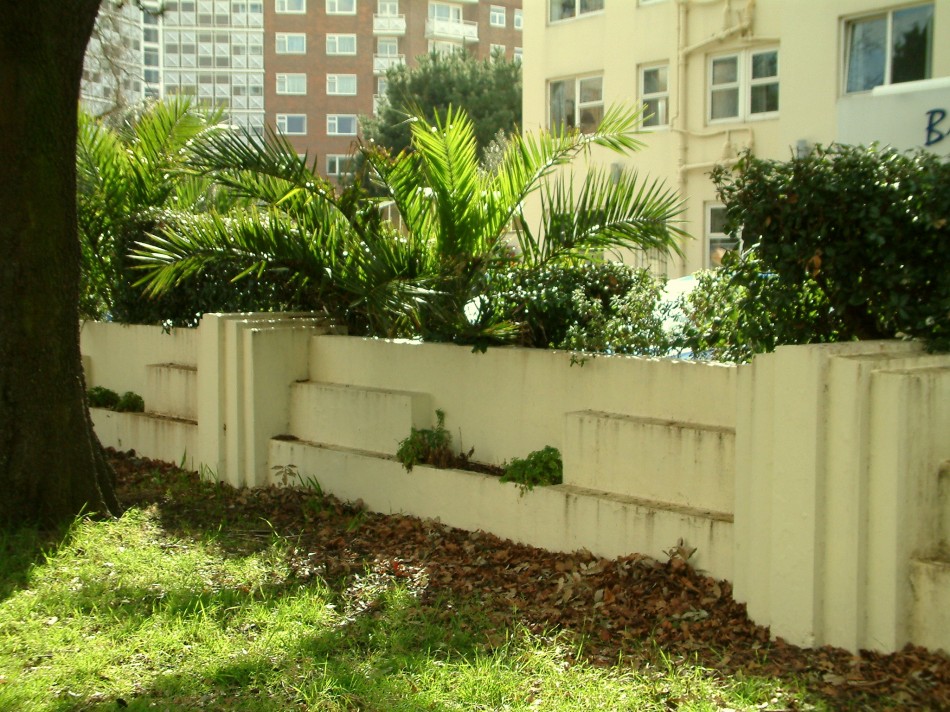
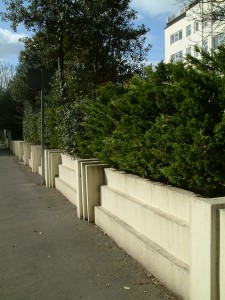
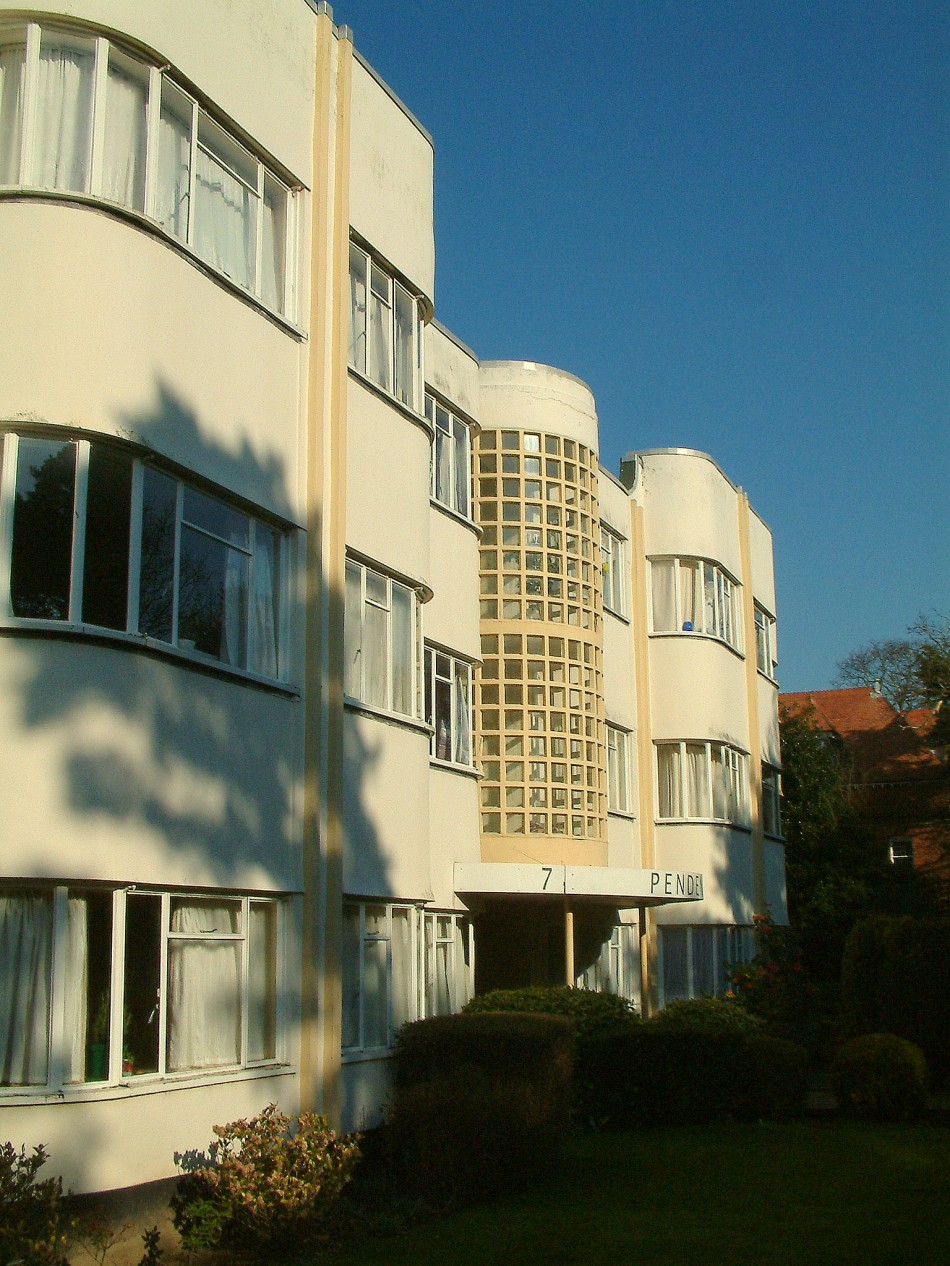 Pendennis , a spectacular apartment block. The curved crittall windows may have gone but the central glass tower still stands out and provides a head turner for people heading down to the beach. Miami may have Palm trees, but the Dorset Pines provide a unique scented backdrop.
Pendennis , a spectacular apartment block. The curved crittall windows may have gone but the central glass tower still stands out and provides a head turner for people heading down to the beach. Miami may have Palm trees, but the Dorset Pines provide a unique scented backdrop. 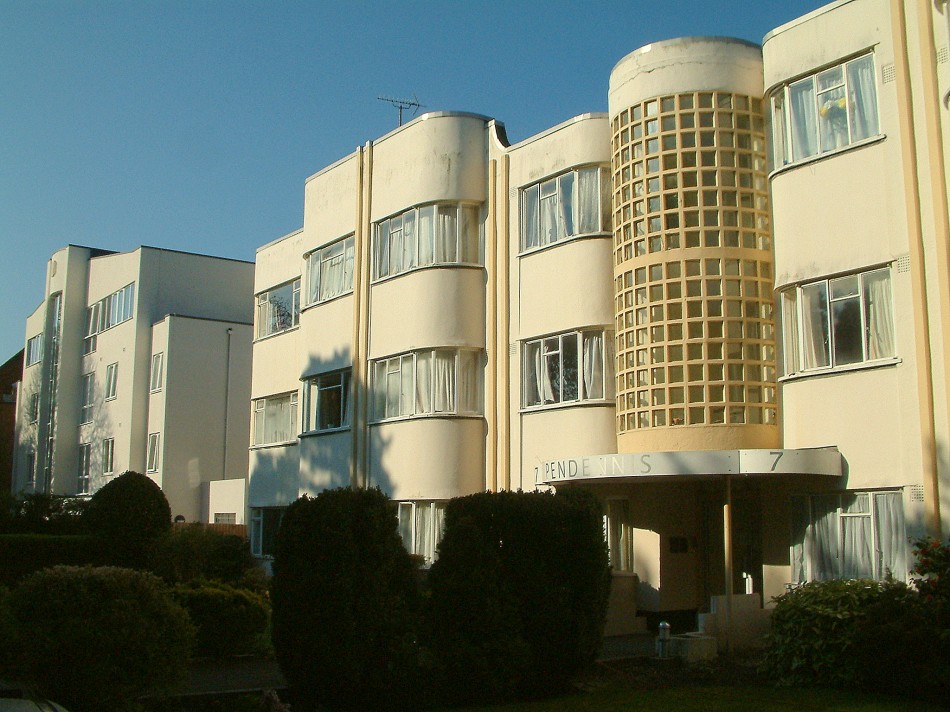 Fittingly a new block of apartments has grown up recently next to Pendennis inspired by the architecture of East Cliff.
Fittingly a new block of apartments has grown up recently next to Pendennis inspired by the architecture of East Cliff.  Pendennis.
Pendennis.